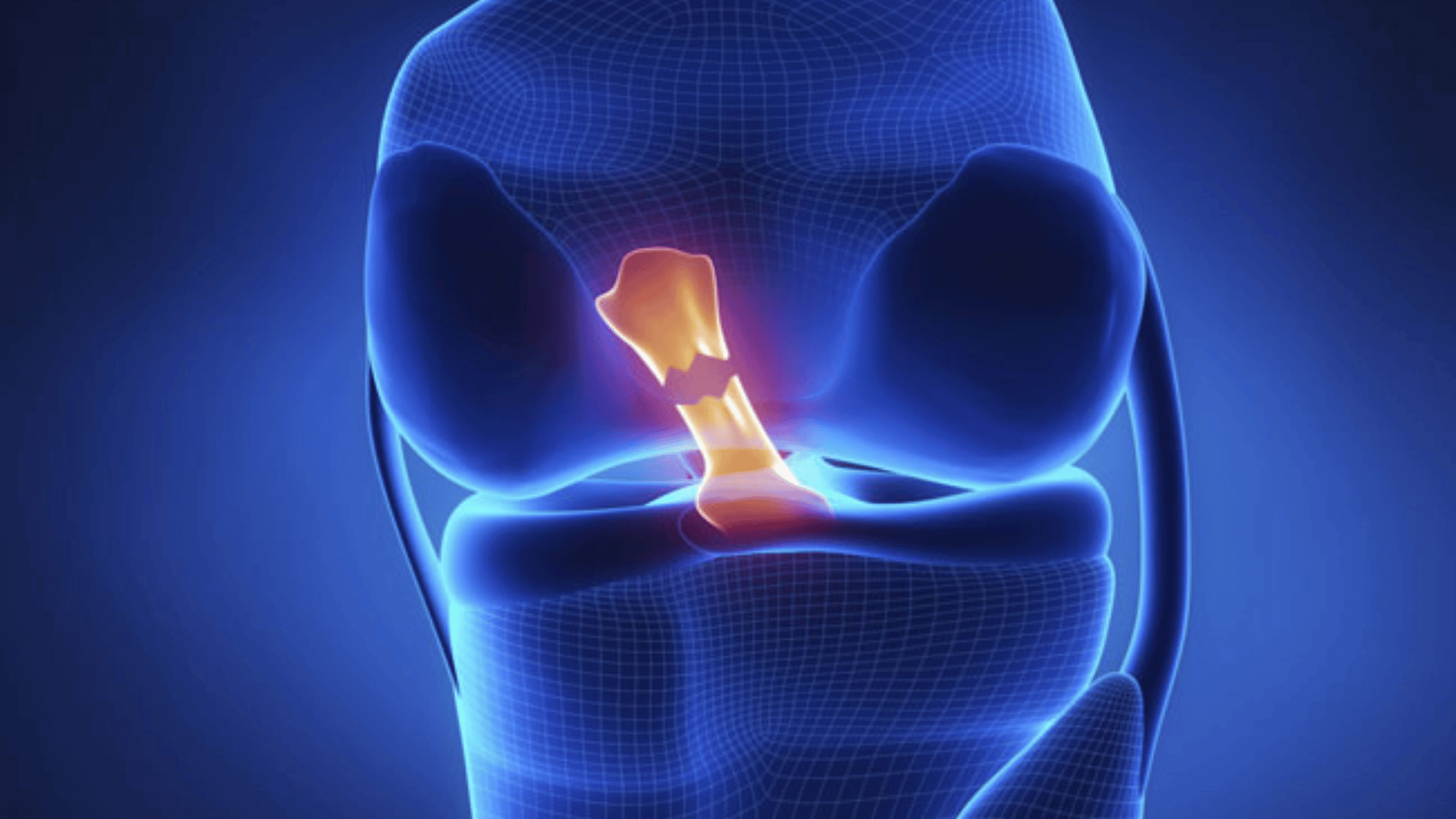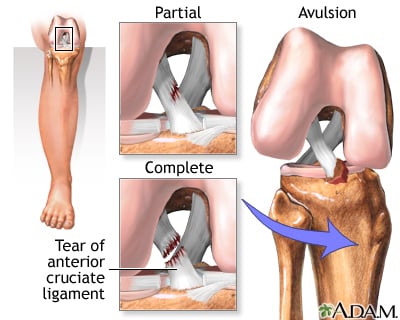ACL Tears: Types, Risk Factors, and Preparing For Surgery

Licensed Physical Therapist, PT, DPT // EW Motion Therapy Homewood
Getting injured is any athlete’s nightmare, especially when an injury can end your season. One of these season-ending injuries that are all too common is a torn ACL. You probably know a football or basketball player who had surgery to repair that ligament - it may even be you.
While the injury can seem debilitating, there is hope for a full recovery with proper rehabilitation and strengthening. Physical therapy can be an excellent treatment option whether you have surgery or not - at EW Motion Therapy, we help many clients with ACL tears return to their sports and stay injury-free for years. Even if you decide our services do not fit your needs, we hope you’ll read on for our discussion of the different types of ACL tears, some of the risk factors, how you can prepare your body for surgery, and other steps for success.
What are the types of ACL tears?
There are two main types of ACL tears: complete and partial. A complete tear means the ACL is torn through and no longer attaches the bones together. Complete tears often require surgery to repair, especially if the patient is an athlete or if the tear causes instability in the knee. A partial tear means the ACL is torn, but the bones are still partially connected by the ligament. Partial tears can often be treated with physical therapy and rehabilitation, depending on the severity of the tear. In some cases, surgery may be required to repair a partial tear.
In addition to these types, three grades are sometimes used to measure the severity of an ACL injury.
Grade 1: the ligament is stretched but not torn.
Grade 2: the ligament is partially torn.
Grade 3: the ligament is a complete or almost complete tear.

What are the risk factors for tearing your ACL?
While ACL tears can occur from various causes, several risk factors can increase your likelihood of experiencing an ACL tear. Let’s review some of the most common risk factors for ACL tears, including:
-
Gender
-
Sports participation
-
Previous injury
-
Alignment issues
-
Hormonal factors
- Improper technique
Gender
Gender plays a major role in the rate of ACL tearing. Studies show females are two to eight times more likely to tear their ACL than males due to various physiological and biomechanical factors. Females typically have wider hips, which can cause their knees to turn inwards, thus putting more stress on the ACL. In addition, female athletes tend to have less muscular strength in the quadriceps and hamstrings, which can reduce the stability of the knee joint. Lastly, female athletes tend to land from jumps with greater knee-valgus angles, which can also increase stress on the ACL.
Sports participation & type of sport
There is a significant relationship between the type of sports and the incidence of ACL (anterior cruciate ligament) tearing. Studies have shown that sports involving rapid changes of direction, jumping, and landing, such as soccer, basketball, volleyball, and skiing, are associated with a higher risk of ACL injuries than sports that involve mainly running and straight-line movements, such as track and field and cycling. Athletes participating in high-impact sports that require frequent pivoting, cutting, and jumping are more susceptible to ACL injuries due to the high forces applied to the knee joint during these movements.
Previous injury
Previous injuries, especially those involving the lower extremities, can increase an individual's likelihood of sustaining an ACL injury. Injuries such as ankle sprains, knee sprains, or muscle strains can lead to compensatory movement patterns, muscle weakness, and altered neuromuscular control, increasing the load on the knee joint during high-impact activities. This increased load may exceed the capacity of the ACL and result in a tear. Additionally, individuals who have previously undergone ACL reconstruction surgery may be at an increased risk of re-tearing their ACL, as the graft used to replace the damaged ligament may not have the same strength and stability as the original ligament.
Alignment issues
Alignment issues, such as poor lower limb alignment or biomechanics, can also increase an individual's likelihood of ACL tears. These issues can lead to abnormal loads being placed on the knee joint during high-impact activities, which can cause damage to the ACL. For example, individuals with a larger Q angle (the angle formed by the intersection of the line between the hip and knee and the line between the knee and ankle) may be at a higher risk of ACL injury due to increased stress on the knee joint during movements that involve pivoting or cutting. Additionally, weak hip muscles can contribute to poor alignment and increase knee joint stress during sports activities.
Hormonal factors
Hormones, specifically estrogen, can also increase an individual's likelihood of ACL tears. Studies have shown that females are at a higher risk of ACL injuries than males, and hormonal fluctuations throughout the menstrual cycle may contribute to this increased risk. Estrogen is known to affect the strength and elasticity of ligaments, including the ACL, making them more susceptible to injury. Additionally, hormonal changes during the menstrual cycle can lead to altered neuromuscular control, which may affect an individual's ability to control their knee joint during high-impact movements.
Improper technique
Improper technique can also increase an individual's likelihood of ACL tears. Poor technique during high-impact movements such as jumping, landing, pivoting, or cutting can result in excessive loading on the knee joint and increase the risk of ACL injury. For example, landing from a jump with knees straight or inwardly rotated, or pivoting on a planted foot with the knee extended, can place excessive stress on the ACL and result in injury. Also, improper cutting or change of direction techniques, such as decelerating or changing direction with the foot planted, can increase the risk of ACL injury.
It's important to note that while these risk factors can increase your likelihood of experiencing an ACL tear, they don't guarantee that you will experience one. By reducing your risk of injury, such as practicing proper technique and strengthening your leg muscles, you can decrease your chances of experiencing an ACL tear.
How can you prepare for ACL surgery?
If you've been told that you need ACL surgery, you're probably wondering what you can do to prepare. You not only need to prepare your body to handle the surgical procedure, but you can ensure your success in other areas.
Preparing your body
If you're scheduled for ACL surgery, there are several exercises you can do to prepare your body for the procedure and aid in your recovery. Keep in mind that the type and intensity of exercises you can do will depend on the severity of your injury and the recommendations of your doctor or physical therapist. Here are some general exercises that may be helpful in preparing for ACL surgery:
Strengthening exercises
Strengthening exercises can help build the muscles around your knee, which can improve your overall knee stability and support during your recovery. Some examples of strengthening exercises that are often recommended include:
-
Leg press
-
Hamstring curls
-
Quad sets
-
Wall squats
-
Glute bridges
Range of motion exercises
Range of motion exercises are designed to improve the flexibility and mobility of your knee joint. Some range-of-motion exercises include:
-
Heel slides seated in a chair, lying down or down a wall
-
Hamstring stretch
-
Knee extension stretch
Control for swelling and inflammation
You may experience some swelling as your ACL heals - inflammation is a natural part of the body’s healing process. As you rest, you can control inflammation with:
-
Icing
-
Compression
-
Elevation
It's important to note that not all exercises may be appropriate for your specific injury or physical condition. Always consult your doctor or physical therapist before beginning any exercise program, especially if you're experiencing pain or discomfort. Additionally, it's important to gradually progress your exercises and listen to your body to avoid over-exertion or further injury.
Other steps for success
In addition to preparing your body for surgery, there are other steps you can take to ensure success for both the surgery and your recovery.
Find a skilled surgeon
The first step in preparing for ACL surgery is to find a skilled and experienced surgeon. Look for a surgeon who has a good reputation and specializes in ACL surgery. Ask for referrals from friends or family members who have had similar procedures, or check with your insurance provider for a list of recommended surgeons.
Get in shape
Being in good physical shape can help with your recovery from ACL surgery. Start exercising regularly to improve your strength and flexibility before your surgery. Talk to your doctor about exercises that are safe for your specific injury and physical condition.
Prepare your home
After surgery, you may have limited mobility and need crutches or a knee brace. Prepare your home before surgery by removing trip hazards, securing loose rugs, and creating a clear path from your bed to the bathroom.
Plan for transportation
You will not be able to drive immediately after ACL surgery, so you will need to arrange for transportation to and from the hospital. Consider asking a friend or family member to drive you or hiring a ride-sharing service.
Stock up on supplies
You'll want to have a few essential items for your recovery period. This includes ice packs, compression bandages, comfortable clothing, and any medications prescribed by your doctor.
Follow your doctor's instructions
Before your surgery, your doctor will provide you with instructions on how to prepare. This may include fasting for a certain amount of time before surgery, stopping certain medications, or avoiding alcohol. Follow these instructions carefully to ensure a smooth surgery and recovery process.
How can physical therapy help you recover from ACL surgery?
Now you know more about how you can prepare for ACL surgery. Physical therapy is an essential part of the recovery process after ACL surgery. A physical therapist can help you regain strength, mobility, and flexibility in your knee while also reducing pain and swelling. Physical therapy is typically started a few weeks after surgery, or as soon as possible for non-surgical treatment. The duration of therapy varies depending on the patient’s progress and goals but may last several months. It is best to visit a physical therapist for your rehab instead of trying to figure it out on your own - they can ensure you do the right things at the right time in the healing process to promote healing and reduce swelling.
An ACL tear can be a devastating injury that can sideline an athlete for a long time. But, with the right preparation, anyone can prepare for surgery and blaze a path to success in their recovery. A physical therapist can be an integral member of your care team - we cherish the opportunity to do that for our patients at EW Motion Therapy. If you’re curious about what else physical therapy can do for you, click the button below to download our answers to 20 frequently-asked physical therapy questions.
.png)

